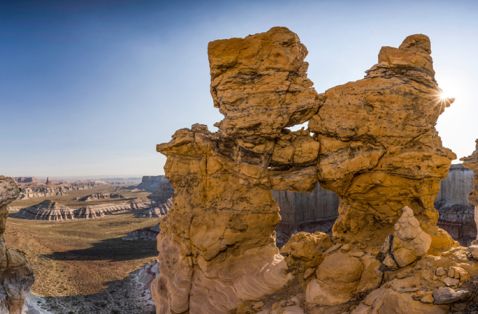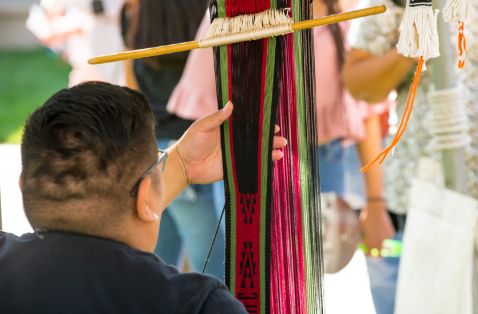Planning
Visiting Tribal Lands
How to visit tribal communities in Arizona respectfully.
Federally recognized tribal lands cover one-quarter of Arizona and have shaped the culture and diversity of the state for hundreds of years. Each of the 22 sovereign tribal nations in Arizona operates under its own government, and tribal laws and regulations vary between communities. Check tribal websites to learn about specific regulations for visitors.
Get the Lay of the Land
Many visitor attractions on tribal lands are in remote areas of the state. Road trippers can expect long stretches of isolated highways between towns without gas stations and services. Fuel up before getting on the road and map out pit stops in advance.
Also check the weather forecast before visiting tribal lands. Many of the most popular destinations are natural wonders reached by long hikes that can take hours or even overnight trips to experience. After heavy rainstorms, dry washes and roads often become raging rivers. If visitors get on the wrong side of a wash, they must wait it out. Arid areas are prone to dust storms that limit visibility and high temperatures that limit what can safely be achieved outdoors. High-elevation sites can get heavy snowfall in the winter. Never test your limits in remote areas with limited services.
Best bet: Join tours led by members of the tribal communities. These pros have navigated everything nature throws their way and will know when to turn around. Plus, in areas with limited cell service, Wi-Fi and GPS, it’s helpful to have a guide that relies on experience to lead the way.
Respect Tribal Guidelines
Failure to comply with tribal regulations can result in fines and/or expulsion from tribal lands.
- Ask Before Taking Pictures on tribal lands and while attending ceremonies that welcome visitors. This applies to video and audio recordings, too. Professional photographers must reach out to each tribal community in advance to secure photography permits.
- Be Courteous at ceremonies. At the bare minimum, consider sacred ceremonies like attending a church service. Observe quietly, do not applaud or voice gratitude and do not use electronics during ceremonies.
- Do Not Disturb plants and animals. Many tribal communities are open-range and visitors may encounter herds of sheep, goats, cows and horses on roadways. Stop and let them pass.
- Get Required Permits to hike into sacred areas and to tour ancient sites.
- Do Not Remove rocks, pottery shards or any other items that could be tribal artifacts.
- Leave No Trace by packing out everything you pack in. Stay on designated trails and do not climb on walls or structures.
- Be Aware of areas visitors should not enter such as burial grounds.
Road Trips
Touring Tribal Lands in Arizona
From cultural etiquette to tour suggestions, here's everything you need to know about visiting the many tribal communities in Arizona.
Arts & Culture
How to Buy American Indian Arts and Crafts
Visitors to any of the 22 tribes in Arizona have a wonderful opportunity to buy handmade work directly from the artist or an approved retailer....
Native Cuisine in Arizona
Arizona Restaurants with Indigenous Dishes and Ingredients
Squash, beans and corn – the "three sisters" of American Indian cooking – are just a few ingredients used in the flavorful dishes served on the...







